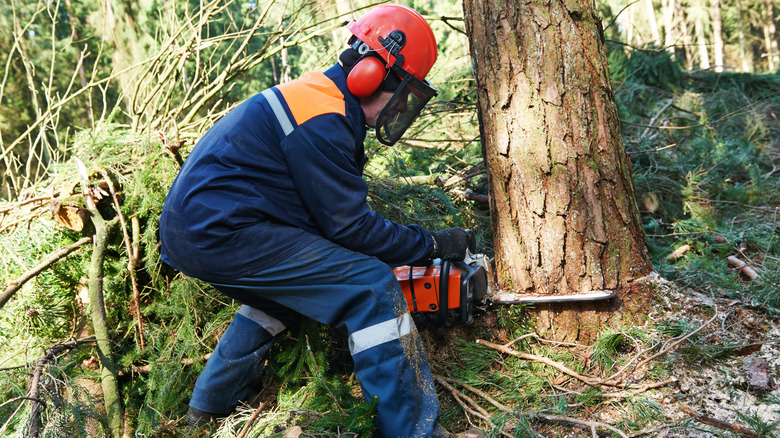Garden Trees, Shrubs & Vines
Erica Crawford
Cutting down trees is a dangerous and daunting job, and all too often, people are faced with tree removal in order to maintain safety. Whether a lighting strike has left a tree needing chopping down, one hangs too close to the roof for comfort, or you are simply a woodcutter doing your job, it’s essential to know the risks that come with tree felling. Barber chair trees are one deadly situation you could find yourself facing. A barber chair tree is one that fails to safely and slowly come down and instead splits in a way that can cause immense harm to the logger.
There are many reasons a barber chair tree may occur, just as there are many ways to take safety measures and prevent it from happening. Before attempting to cut down a tree, you need to understand exactly how a barber tree accident comes to fruition and how you can take the proper steps to not only avoid it but also safely escape it.
Barber chair trees and their dangers
Despite what it sounds like, a barber chair tree is not a species of tree but rather the mishap of a tree-cutting gone wrong. When cutting down a tree, a felling hinge is created, which is the chunk of wood between a frontcut and a backcut that allows the woodcutter to control the tree’s fall. Unfortunately, this is not always a smooth process, and sometimes, the tree will split vertically, otherwise known as a barber chair. The peculiar name for this situation comes from the way a barber chair would send a customer’s head down and feet up for better access when shaving with razors.
When a tree experiences too much frontal pressure, pulling the tree forward before the felling hinge can fold, the result is an incredibly dangerous split up the tree. A barber chair can be deadly for a woodcutter as it causes the trunk to snap back and strike whoever is behind it. Additionally, without the slow-to-fall effect that the hinge is meant to provide, the tree can aggressively and quickly snap up and off, creating an incredibly dangerous situation where someone could get hit. Many people are unaware that a vertical split can occur when cutting down a tree, especially those who are inexperienced and taking care of trees inside their own properties.
Avoiding a barber tree incident

Dmitry Kalinovsky/Shutterstock
A barber tree situation can happen quickly and with little warning, but some precautions can prevent a deadly accident. First and foremost, always wear proper safety gear no matter what. When performing this task, one should always have on a hard hat, face protection in the form of goggles or a face shield, durable gloves, hearing protection, and non-slip steel-toed boots. Leg protection wouldn’t be a bad idea, either. Create an escape plan beforehand and know exactly how you will extract from a situation gone wrong. Alongside ensuring you are adequately covered and prepared, avoiding a barber tree incident will be all about the cuts you make and how you position your body.
The first thing you’ll want to do is use a well-working and sharp saw to make an open-faced notch and then a bore cut afterward to create your hinge. You want your face and back cut to be level, so avoid making the back cut higher than the face. Reducing the pressure on the tree’s vertical tendrils will lower the overall risk of a barber chair issue. Varieties known to be more at risk to barber chair are alders, ash, white pine, and tulip poplars. Trees already leaning are also more dangerous and susceptible to splitting because an uneven weight distribution exists. In the case of a leaning tree, or if you are not well-versed in woodcutting, don’t hesitate to call in a professional to remove the tree from your yard.



